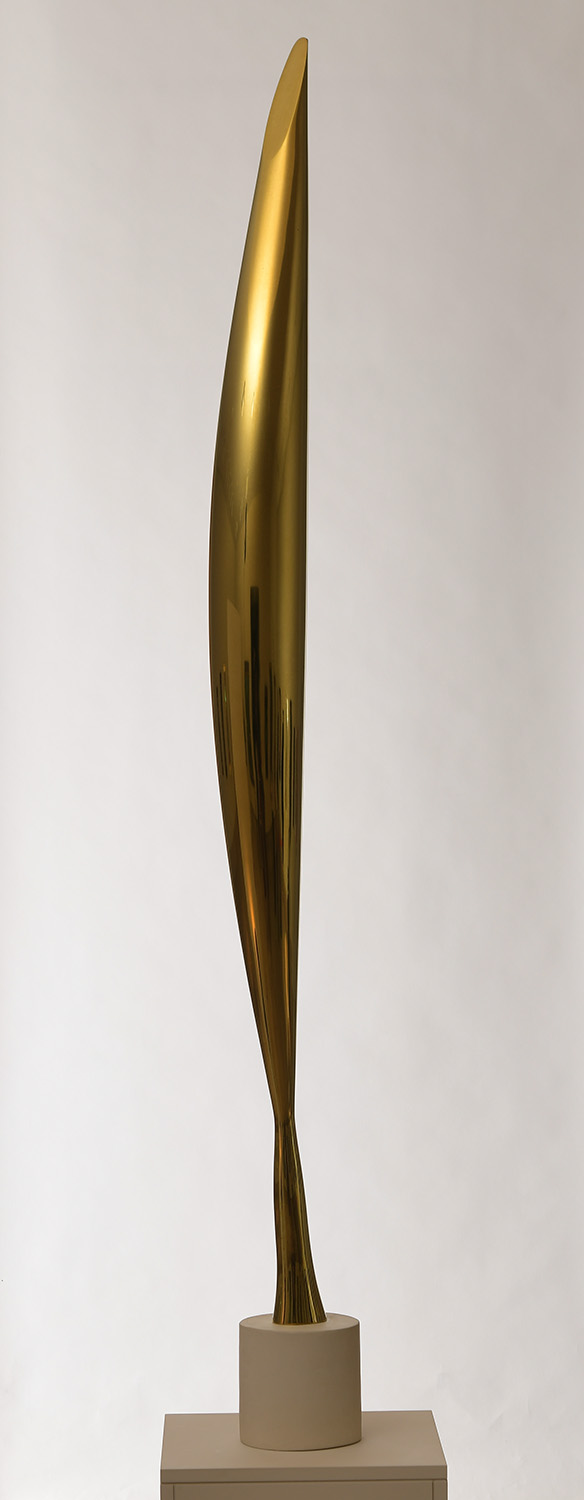Bird in Space
1931
Constantin Brancusi (Romanian, 1876–1957)
Polished bronze
The Norton Simon Foundation
© Succession Brancusi – All rights reserved (ADAGP)
Brancusi produced his first Bird in Space—a sleek abstraction of flight—in 1923. He went on to create fifteen variations on the theme, working in both bronze and marble. This version, cast in 1931, was acquired by Yashwant Rao Holkar II—the young Maharaja of Indore—for his Art Deco palace. During his visit to Brancusi’s studio in 1933, the Maharaja also reserved two other Birds in Space (in black marble and white, today at the National Gallery of Australia). When Brancusi shipped these to India three years later, he enclosed a note explaining, “My birds are a series of different objects based on a central theme that remains the same throughout. The ideal of its realization is to be an amplification that fills the whole vault of heaven.”
Brancusi’s Bird in Space Soars Again
How do you keep a tall sculpture with a high center of gravity safe during seismic activity? John Griswold, Head of Conservation and Installations, pondered this question while collaborating with a team of engineers to design a pedestal equipped with a base isolator system strong enough to withstand earthquakes. In an essay on the sculpture’s reinstallation process published in Retrospect: Stories from the Norton Simon Museum (2025), Griswold outlines both the art historical and technical factors that determined his preservation and mounting plans. He looked at early photographs of the sculpture’s first pedestals, studied the tarnishing and small pits on the surface from casting and considered Brancusi’s dislike of lacquer. Bird in Space now soars safely in the heart of the 20th-century galleries.
